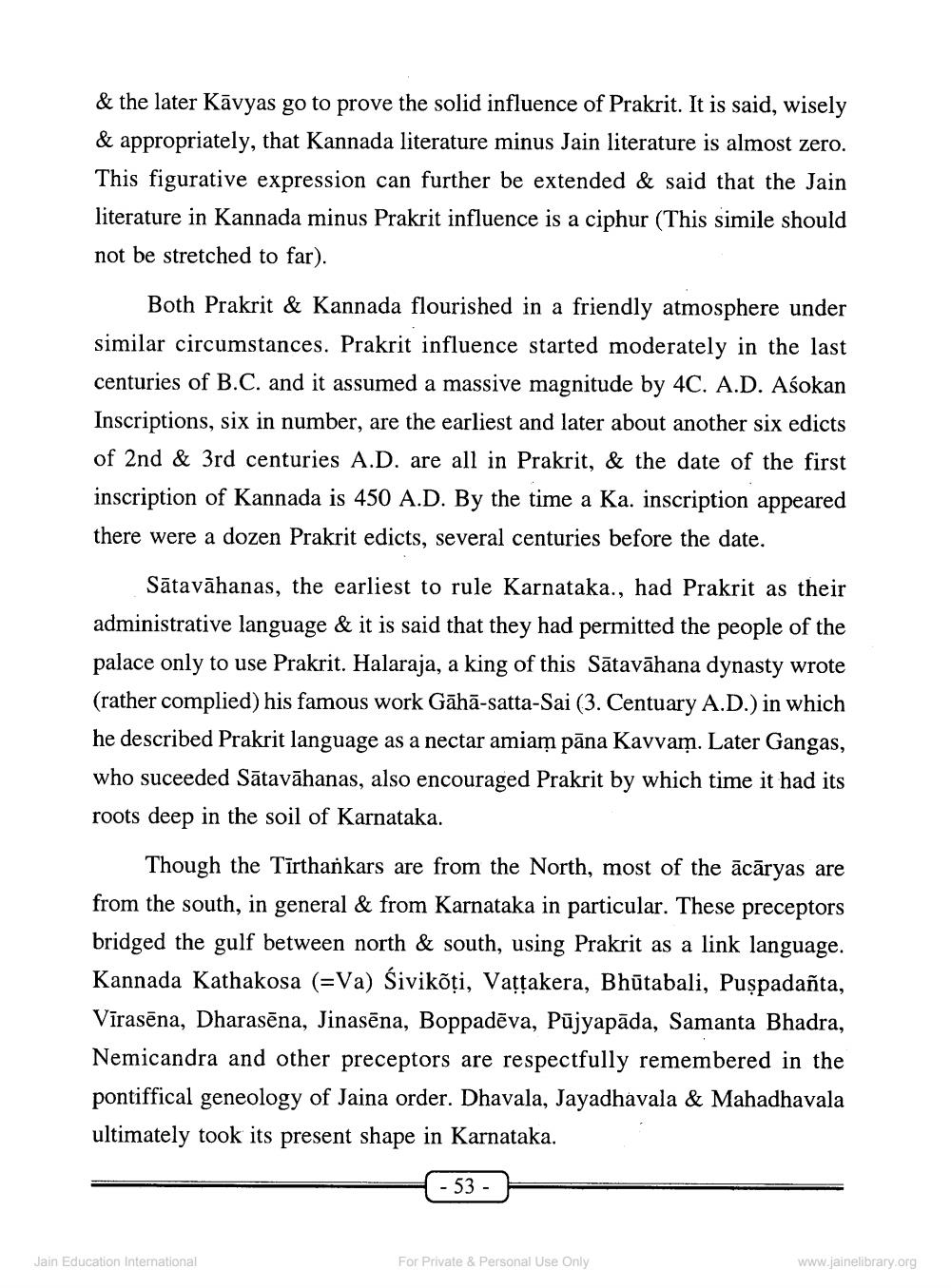________________
& the later Kāvyas go to prove the solid influence of Prakrit. It is said, wisely & appropriately, that Kannada literature minus Jain literature is almost zero. This figurative expression can further be extended & said that the Jain literature in Kannada minus Prakrit influence is a ciphur (This simile should not be stretched to far).
Both Prakrit & Kannada flourished in a friendly atmosphere under similar circumstances. Prakrit influence started moderately in the last centuries of B.C. and it assumed a massive magnitude by 4C. A.D. Asokan Inscriptions, six in number, are the earliest and later about another six edicts of 2nd & 3rd centuries A.D. are all in Prakrit, & the date of the first inscription of Kannada is 450 A.D. By the time a Ka. inscription appeared there were a dozen Prakrit edicts, several centuries before the date.
Sātavāhanas, the earliest to rule Karnataka., had Prakrit as their administrative language & it is said that they had permitted the people of the palace only to use Prakrit. Halaraja, a king of this Sātavāhana dynasty wrote (rather complied) his famous work Gāhā-satta-Sai (3. Centuary A.D.) in which he described Prakrit language as a nectar amiam pāna Kavvam. Later Gangas, who suceeded Sātavāhanas, also encouraged Prakrit by which time it had its roots deep in the soil of Karnataka.
Though the Tīrthankars are from the North, most of the ācāryas are from the south, in general & from Karnataka in particular. These preceptors bridged the gulf between north & south, using Prakrit as a link language. Kannada Kathakosa (=Va) Sivikõți, Vattakera, Bhūtabali, Pușpadañta, Vīrasēna, Dharasēna, Jinasēna, Boppadēva, Pūjyapāda, Samanta Bhadra, Nemicandra and other preceptors are respectfully remembered in the pontiffical geneology of Jaina order. Dhavala, Jayadhavala & Mahadhavala ultimately took its present shape in Karnataka.
- 53 -
Jain Education International
For Private & Personal Use Only
www.jainelibrary.org




